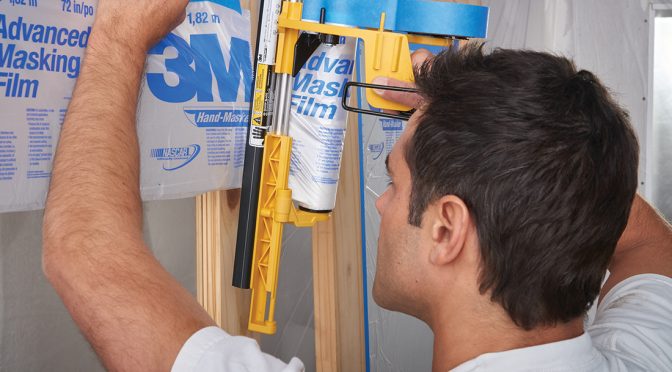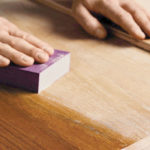Masking at the job site is a critical step in delivering professional painting results. Masking protects against paint drips, splatters and overspray that may cause damage or are difficult to remove.
We sat down with the technical services team in 3M’s Construction & Home Improvement Markets Division to learn about the latest masking technology and techniques. Here is their advice to pro painters:
Traditional masking methods
Masking has traditionally been done using paper and masking tape, but that’s a very time-consuming process.
There was room for improvement – paper isn’t very moldable around edges and corners, and it’s certainly not waterproof, an issue if you’re painting outdoors. However, paper is inexpensive.
Next-level improvements
Many pro painters changed from paper to mask with boxed film or plastic along with masking tape. Benefits include:
- No paint bleed-through
- Stretch that’s more moldable
- Water resistance
- Films that allow light into the job site
While these materials have significant benefits, they can be difficult to work with. If you need to mask off a larger area quickly, you’re out of luck.
The latest labor savers
With the availability of masking films and lightweight masking tools that apply painter’s tape to masking films, plastic or paper in one continuous application, the masking job can now be completed faster than doing all of that masking by hand.
Using a masking tool with folded film for large areas is faster than using tape and boxed plastic.
Film is a great moisture barrier (no paint bleed-through or getting wetted out by rain). And because some brands are treated so dried paint won’t flake off, the right masking film is ideal for masking multiple-coat applications.
In some instances, the film layers have a hassle-free fold that makes unfolding a breeze (so masking off large areas is easy) and prevents the film from getting caught in the tape.
Films are thin and supple, so they mold easily around corners and odd shapes. And their static cling feature keeps films in place even when using spray equipment or in windy exterior conditions.
Master your masking tools
Most painters already have a lightweight masking tool that applies masking materials while it dispenses painter’s tape onto the edge of that material so it can be easily applied to cover a door, window or cabinets.
The problem now: Too many of those pro painters aren’t sure how to use the masking tool for this application so they aren’t benefiting from the huge time-savings that it offers.
If you or one of your crew has a masking tool that’s gathering dust or is only being used with masking paper, find out how to use it with masking plastics or films. There are lots of great videos online that can show you how it works.
Here’s one example (in English):
Bottom line: Good technique saves time
Some contractors make painters buy their own equipment, including a masking tool, believing that better care will be taken of gear if the painter has to shell out his or her own cash for it.
In other firms, the owner/manager provides all the necessary equipment for their painters.
In either case, some may shy away from purchasing a masking tool and its pre-folded masking film because masking can, in fact, be done by hand.
The problem is that doing it by hand takes a loooong time.
And time is money.
This article was originally published in the Summer 2017 issue of PPC magazine. It was developed in collaboration with the technical services team in 3M’s Construction & Home Improvement Markets Division. Visit swlatino.com for more information on products, application techniques, pro discounts and building your painting business.




